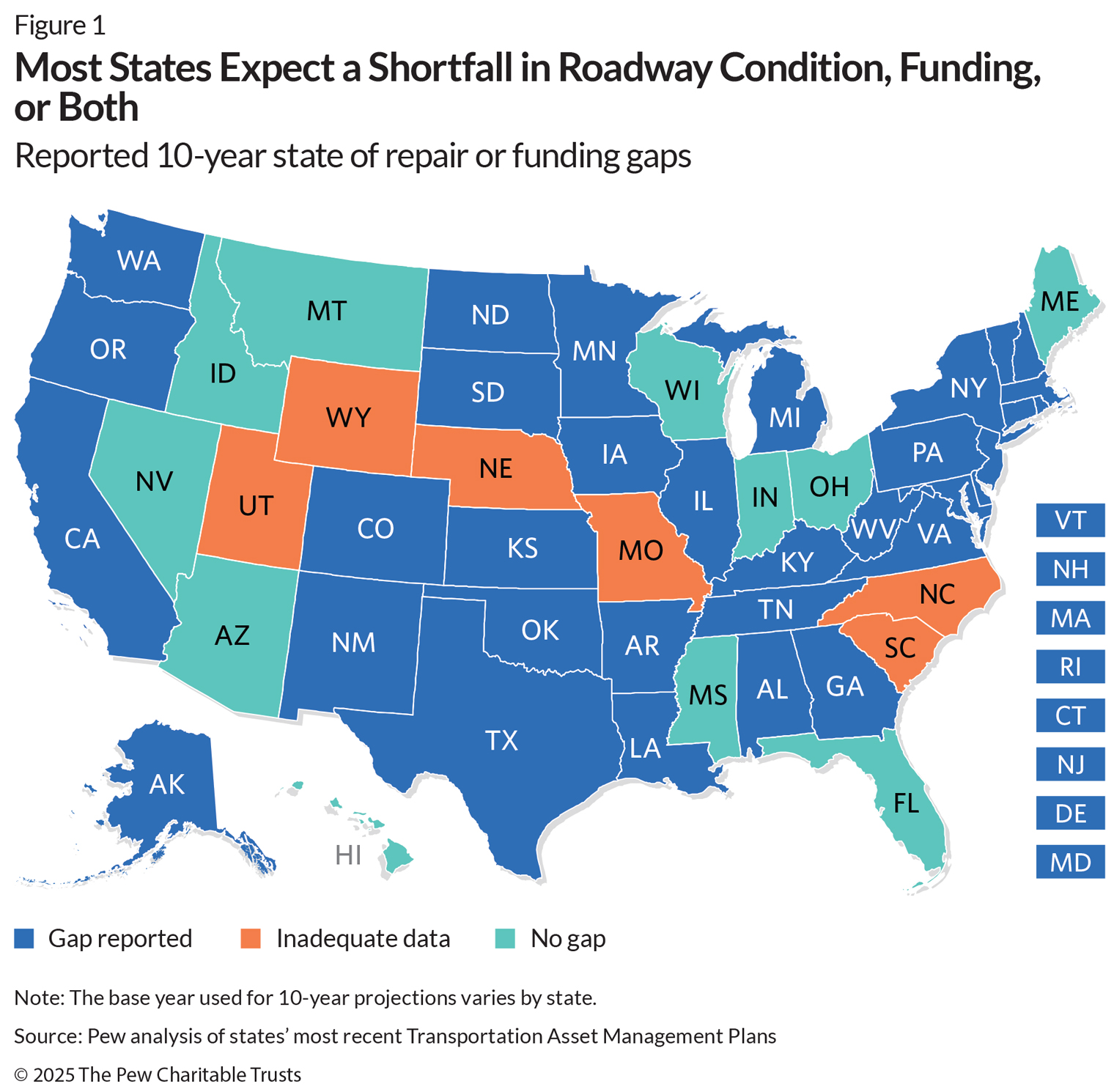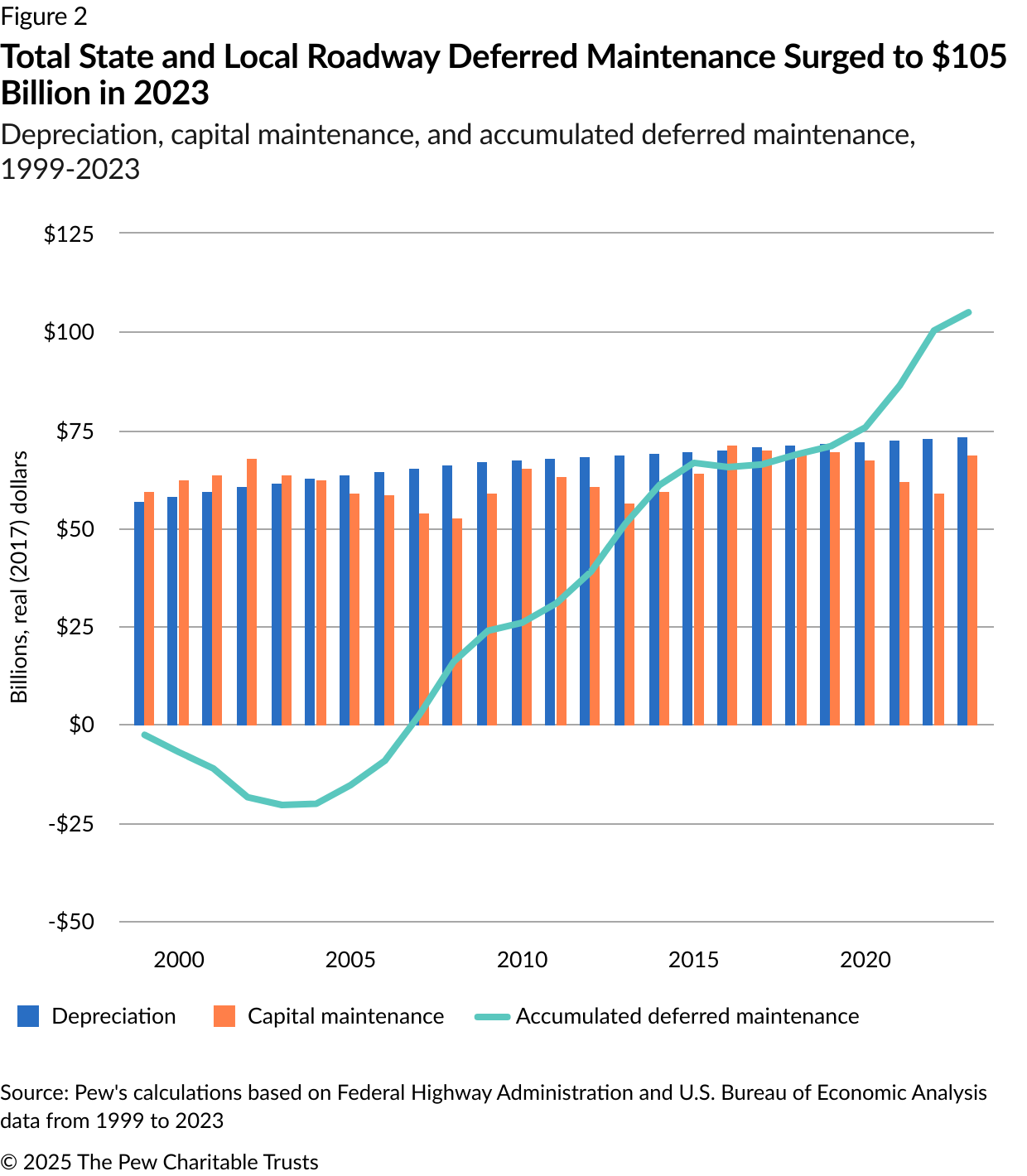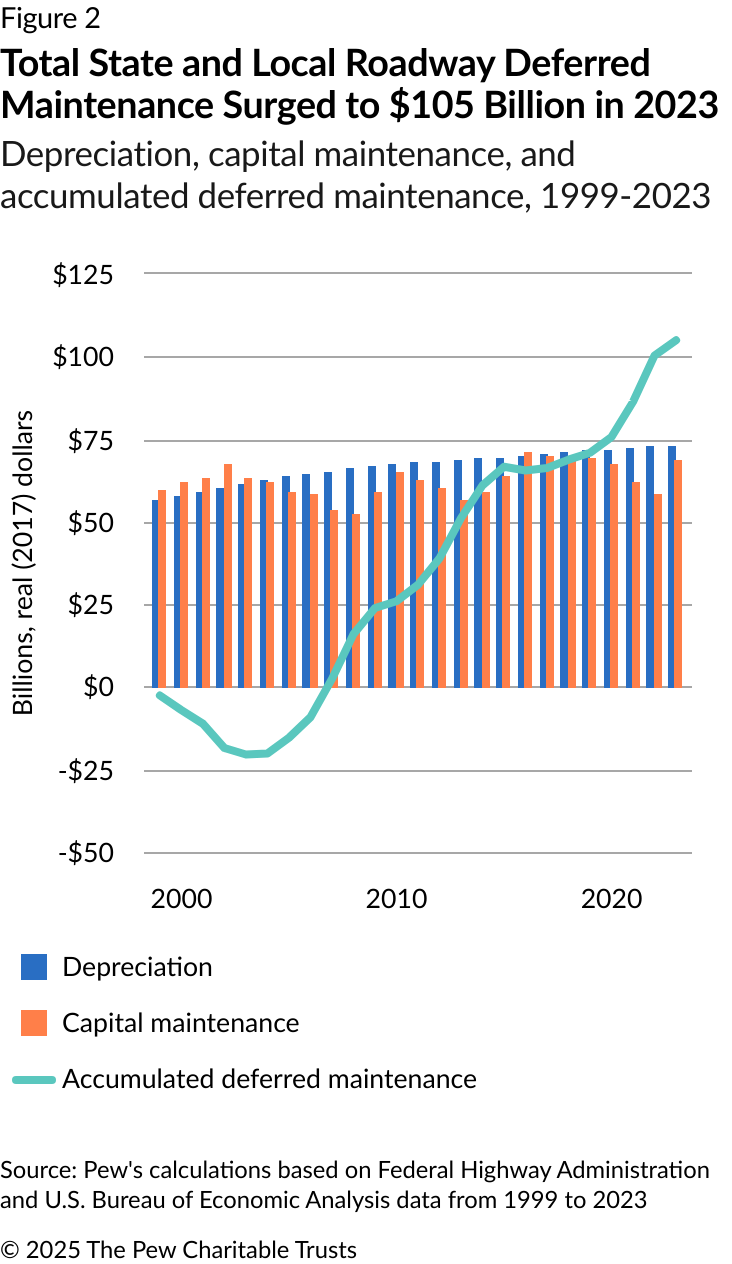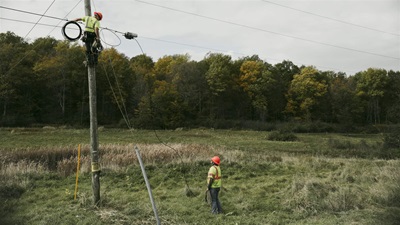Will States Be Able to Keep Their Roads and Bridges in Good Shape for the Future?
New data shows concerning shortfalls and ongoing funding gaps

States are struggling to keep key roads and bridges in adequate condition, limiting residents’ mobility and safety and portending a big bill coming due for future taxpayers. Two studies from The Pew Charitable Trusts explore the scale of the problem from the end of the 20th century into the 2030s, finding that, in general, states have dug a significant and growing hole in their ability to maintain and repair critical transportation infrastructure and highlighting the need for consistent data, improved funding, and better management of state roadway assets.
Pew’s new report, “States Fall Short of Funding Needed to Keep Roads and Bridges in Good Repair,” looks into the future by examining state departments of transportation (DOTs) projections of road and bridge conditions and funding. The analysis showed that most states expect a gap between what they have targeted as a “state of good repair” (SOGR) for roads and bridges and the anticipated condition of those assets under their current policy and funding levels. Among states with data available, the combined projected funding gap over the next decade is more than $86 billion.
Pew’s recent issue brief, “State and Local Governments Face $105 Billion in Deferred Maintenance for Roads and Bridges,” examined past investments in roadway assets, looking at spending from 1999 through 2023. That study found that states and localities have accumulated a $105 billion gap between what should have been invested to preserve, maintain, and repair roadway infrastructure and what they actually spent.
Unless policymakers move swiftly to identify and address gaps in the funding and condition of roads and bridges, these past and projected shortfalls will place demands on future budgets, potentially threatening the availability of funding for other public priorities and leaving residents to drive on roadways that are in poor condition.
Most states expect to fall short of their own targets
Pew reviewed the federally required Transportation Asset Management Plans (TAMPs) from all 50 states and found that most do not expect to be able to adequately repair, rehabilitate, and preserve their National Highway System (NHS) roads and bridges as well as other state and local roadways. (See Figure 1.) In total, 33 states’ TAMPs indicated gaps in funding, condition, or both for their NHS and other roads and bridges. Only 11 states projected that they would have sufficient funding and be able meet their SOGR targets. The remaining six states did not have adequate information to assess whether they will meet their targets or face gaps.
Among the states that projected gaps, 24 reported a funding shortfall over 10 years, totaling $86.3 billion. These states already expect to collectively spend $194 billion on roads and bridges covered by their TAMP analyses over the next decade, and they would need to increase spending by 44%—or at least $8.6 billion annually—to reach the $280 billion needed to achieve their SOGR targets for those roadways. Only nine states projected adequate funding, and 17 did not report the information needed to evaluate whether their spending would be sufficient.
Funding for state and local roadways has lagged since 2004
How did states end up expecting to miss their own targets for maintaining and preserving key transportation assets? Pew used data from the U.S. Bureau of Economic Analysis and the Federal Highway Administration to calculate the accumulated $105 billion in deferred maintenance from 1999 through 2023. In contrast to the projected funding gap found by looking at state TAMPs, the $105 billion gap in this report represents past shortfalls.
To reach that figure, Pew first determined annual “net maintenance” in roadways—the difference between the share of net investment used to preserve existing assets (or “capital maintenance”) and depreciation, the annual decline in the value of infrastructure assets from wear and tear, damage, and age. Capital maintenance exceeded depreciation from 1999 through 2003, but then net maintenance turned negative in 2004 and stayed that way every subsequent year excluding 2016, adding each year to the total deferred maintenance. (See Figure 4.)
Past shortfalls and an inability to meet future needs have put states in a tough position. Finding the money to make necessary investments in roads and bridges could crowd out other important spending priorities. But continuing to defer the maintenance and repair of roads and bridges will only delay the inevitable costs while letting roadway conditions deteriorate further.
To address these funding and condition gaps and ensure that future generations are not left paying the bills, states will need to better track and manage the condition of their roads and bridges so policymakers can understand whether transportation investment policies are sustainable and make needed adjustments.
David Draine is a principal officer, Emma Wei is a manager, and Elijah Gullet is a senior associate with The Pew Charitable Trusts’ state fiscal policy project.















